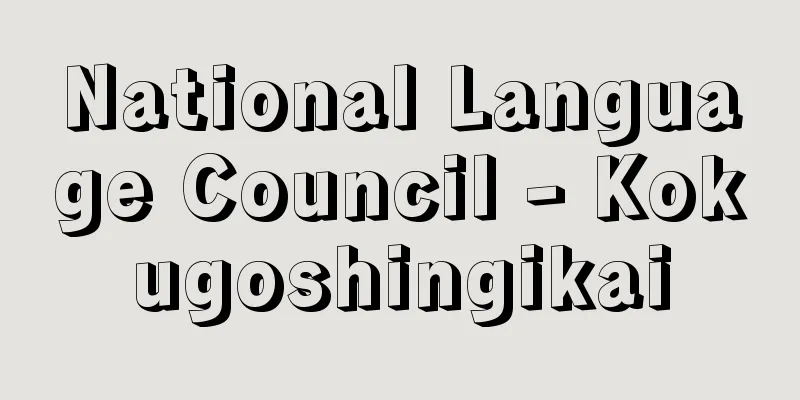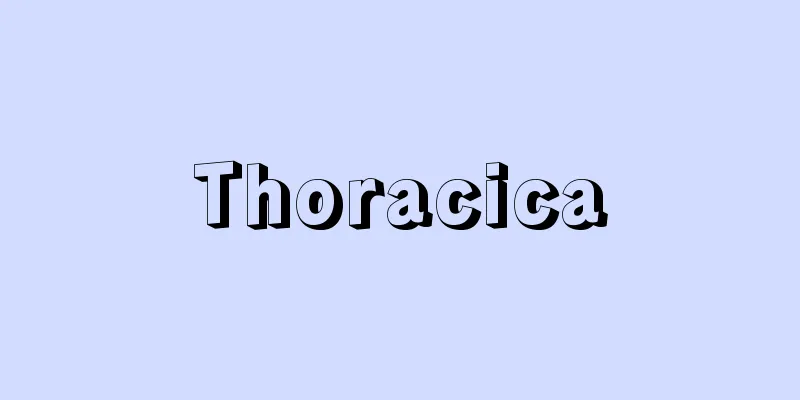National Language Council - Kokugoshingikai

|
An organization that, in response to inquiries from the Minister of Education, investigates and deliberates matters related to the improvement of the national language, the promotion of national language education, and the Roman alphabet, and makes recommendations to the government on matters it deems necessary in these areas. Established by the National Language Council Ordinance under the Ministry of Education Establishment Act, the National Language Council is made up of up to 50 members appointed by the Minister of Education from among academics and officials of related administrative agencies, and deliberated the above-mentioned matters, particularly the problem of kanji and kana spelling, for a two-year term. Although it was an organization that deliberated and made recommendations, some of its recommendations were adopted by the government and promulgated as Cabinet Instructions and Notifications, and as so-called national language policies, they had a considerable impact on society and education. With the reorganization of government ministries and agencies in 2001, the council was abolished, and its functions were taken over by the Council for Cultural Affairs of the Agency for Cultural Affairs. It was established in 1934 (Showa 9) as an advisory body to the Minister of Education, developing from the Provisional National Language Council, but after World War II, it added many temporary members and submitted recommendations such as the "Modern Kana Usage" and "List of Kanji for Current Use" (both in 1946), the "List of Homophones and Reads," "List of Homophones and Reads," and the "List of Homophones and Reads in Roman Letters" (Kanji List for Education), which were adopted by the government. It was reorganized in 1949 (Showa 24) as a recommendation body with 70 members, and proposed "How to Add Okurigana" and "How to Spell in Roman Letters," which were adopted by the government, as well as issuing "Guidelines for National Language Problems" and "Honorific Language for the Future." It was reorganized in 1987, and thereafter reviewed previous policies, submitting recommendations and promulgating "How to Add Okurigana" in 1973, "List of Kanji for Current Use" in 1981, "Modern Kana Usage" in 1986, and "Writing of Foreign Words" in 1991. [Giant Forest] [References] | | | | |Source: Shogakukan Encyclopedia Nipponica About Encyclopedia Nipponica Information | Legend |
|
文部大臣の諮問に応じて、国語の改善、国語教育の振興およびローマ字に関する事項を調査・審議し、これらに関して必要と認める事項を政府に建議する機関。文部省設置法に基づき、国語審議会令によって設置され、学識経験者および関係行政機関職員のうちから文部大臣が任命する50人以内の委員からなり、2年を1期として上記の事項なかんずく漢字問題・仮名遣い問題について審議を重ねた。審議し、建議する機関であったが、その答申のいくつかは政府の採用を経て内閣訓令・同告示として公布され、いわゆる国語施策として、社会・教育にかなりの影響を与えた。2001年(平成13)の省庁再編に伴い廃止、その機能は文化庁の文化審議会へと引き継がれた。 1934年(昭和9)臨時国語審議会を発展させて、文部大臣の諮問機関として設置されたのに始まるが、第二次世界大戦後、多数の臨時委員を入れて、「現代かなづかい」「当用漢字表」(ともに1946)、「同音訓表」「同字体表」、「同別表」(教育漢字表)の答申を行い、政府の採用するところとなった。49年(昭和24)改組、委員70名からなる建議機関となり、「送りがなのつけ方」「ローマ字のつづり方」を建議し、政府の採用するところとなったほか、「国語問題要領」「これからの敬語」などを出した。62年改組、以後、それまでの施策の見直しを行い、73年「送り仮名の付け方」、81年「常用漢字表」、86年「現代仮名遣い」、91年「外来語の表記」を答申、公布された。 [林 巨樹] [参照項目] | | | | |出典 小学館 日本大百科全書(ニッポニカ)日本大百科全書(ニッポニカ)について 情報 | 凡例 |
<<: Government bonds - kokusai
>>: Japanese language and Japanese character questions - kokugokokujimondai
Recommend
Kendall, H.
…Private schools also follow the state system for...
Pseudo-precocious puberty - Precocious puberty
…The above cases of precocious puberty are called...
Club des Feuillants (English name)
The Fouillant Club was founded in July 1791, after...
Amada River
…The main river has a length of 146 km and a tota...
jupe
…In a broad sense, it refers to the hem or edge o...
Individual identification method
In ethology, ecology, and animal sociology, a meth...
parr mark
...In Wakayama it is called Kirikuchi, in the Chu...
Factor scores - Indicators
...If we write this model as a formula for the ca...
Large-flowered larkspur - Large-flowered larkspur
... There are about 250 species of Delphinium (la...
voluntary muscle
…the former is called voluntary movement, the lat...
Zvevo - Zvevo (English spelling) Italo Svevo
Italian author. His real name was Ettore Schmitz....
Turbellarian - Turbellarian (English spelling)
A general term for flatworms belonging to the clas...
mouton
…High-quality fur is supple, shiny, and easy to s...
Academia Sinica (English)
…the predecessor of the Chinese Academy of Scienc...
"Mandala of the Ten Worlds of Contemplation"
From the end of the Muromachi period onwards, wom...







![Motobu [town] - Motobu](/upload/images/67cd050ea99d1.webp)

